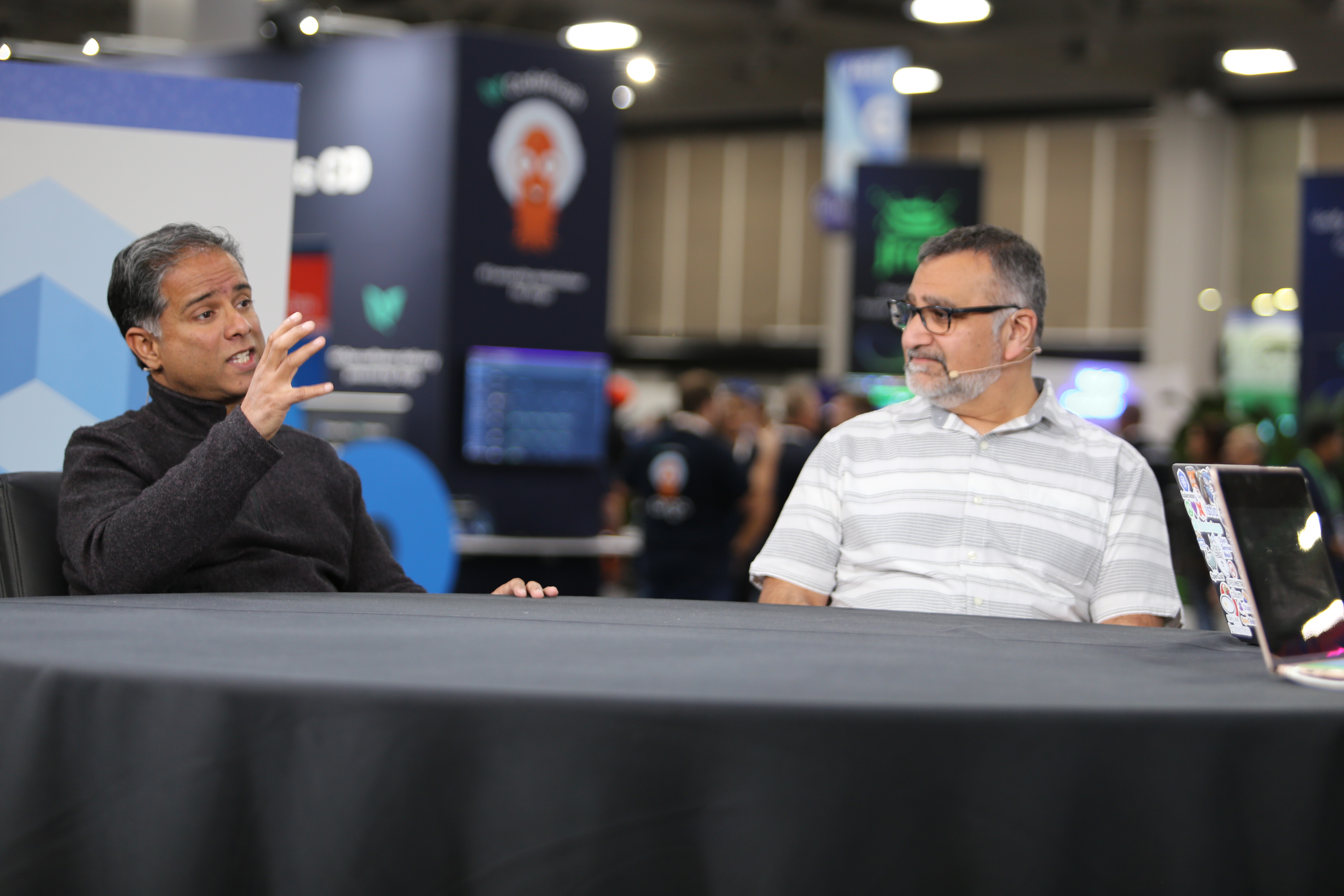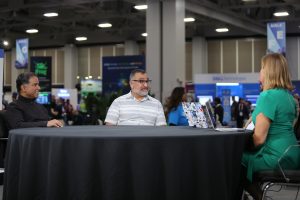 BIG DATA
BIG DATA
 BIG DATA
BIG DATA
 BIG DATA
BIG DATA

Portworx’s Venkat Ramakrishnan and T-Mobile’s Ameer Dixit discuss AI use cases.
Dixit and Venkat Ramakrishnan (left), vice president of engineering and products of Portworx, spoke with theCUBE Research’s Savannah Peterson and Rob Strechay at KubeCon + CloudNativeCon NA, during an exclusive broadcast on theCUBE, SiliconANGLE Media’s livestreaming studio. They discussed T-Mobile’s journey with Kubernetes, the transformative role of AI in fields like machine vision, and how Portworx is enabling organizations to scale innovation. (* Disclosure below.)
Artificial intelligence relies on vast amounts of data. However, a realization surfacing gradually is that the use case for streamlined data management extends beyond gen AI into other cutting-edge fields such as machine vision and autonomous vehicle tech. Companies increasingly rely on comprehensive platforms addressing all cloud-native data needs, and Portworx has moved beyond storage to support that soaring demand for a broader scope of data-intensive AI applications.
“We have helped our customers build autonomous cars, machine vision, and most of the large language models and supervised and unsupervised machine learning models actually run on Kubernetes,” Ramakrishnan said. “What we see now is this huge outgrowth in all of these models coming out and a lot of research and a lot of development that has been going on for many years are actually now out there for people to take advantage of.”
Kubernetes has become the backbone of cloud-native applications, transforming how enterprises manage workloads. T-Mobile’s Kubernetes journey and use of Portworx’s infrastructure enabled it to streamline application deployment across hundreds of clusters and tens of thousands of nodes.
The shift from stateless to stateful applications in Kubernetes has been significant. Given the platform’s consistent uptime and performance, concerns about storage reliability have largely dissipated. This transition has reduced operational burdens, allowing developers to focus on innovation rather than infrastructure, according to Dixit.
“We have storage classes — we have a very small amount of documentation and it works for this very large user base,” he said. “We do have some busy storage workloads and again, happy with their performance and I’m not fighting too many battles with that.”
Here’s the complete video interview, part of SiliconANGLE’s and theCUBE Research’s coverage of KubeCon + CloudNativeCon NA:
(* Disclosure: Portworx at Pure Storage Inc. sponsored this segment of theCUBE. Neither Portworx nor other sponsors have editorial control over content on theCUBE or SiliconANGLE.)
Support our open free content by sharing and engaging with our content and community.
Where Technology Leaders Connect, Share Intelligence & Create Opportunities
SiliconANGLE Media is a recognized leader in digital media innovation serving innovative audiences and brands, bringing together cutting-edge technology, influential content, strategic insights and real-time audience engagement. As the parent company of SiliconANGLE, theCUBE Network, theCUBE Research, CUBE365, theCUBE AI and theCUBE SuperStudios — such as those established in Silicon Valley and the New York Stock Exchange (NYSE) — SiliconANGLE Media operates at the intersection of media, technology, and AI. .
Founded by tech visionaries John Furrier and Dave Vellante, SiliconANGLE Media has built a powerful ecosystem of industry-leading digital media brands, with a reach of 15+ million elite tech professionals. The company’s new, proprietary theCUBE AI Video cloud is breaking ground in audience interaction, leveraging theCUBEai.com neural network to help technology companies make data-driven decisions and stay at the forefront of industry conversations.